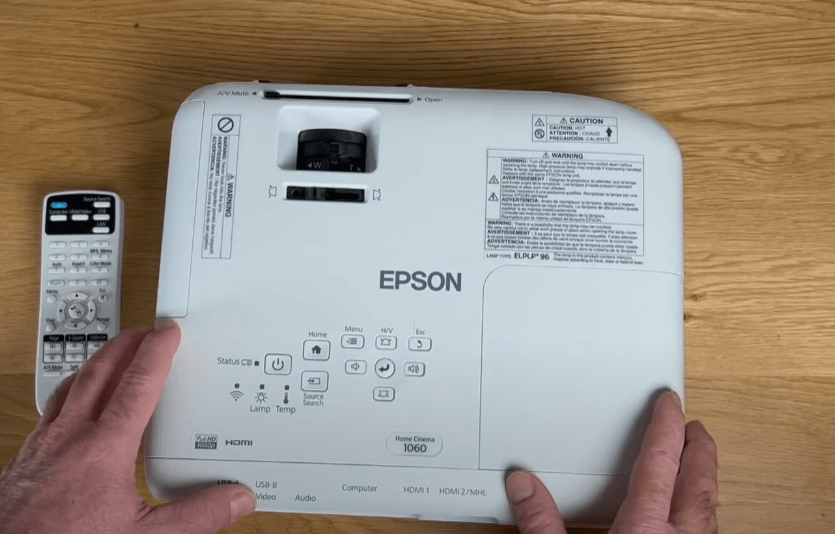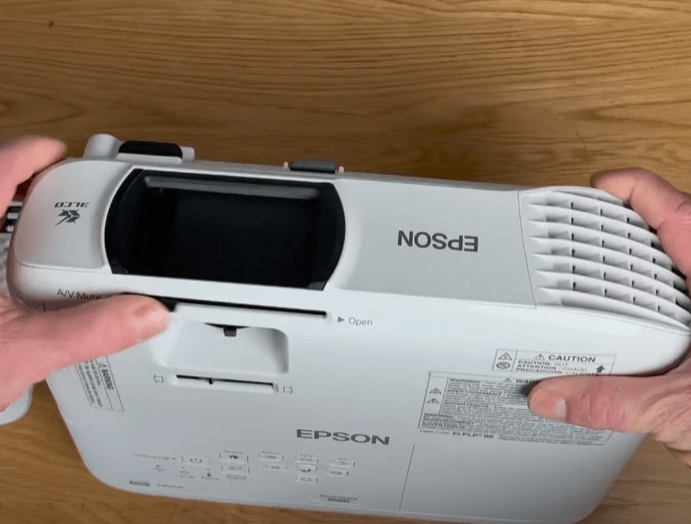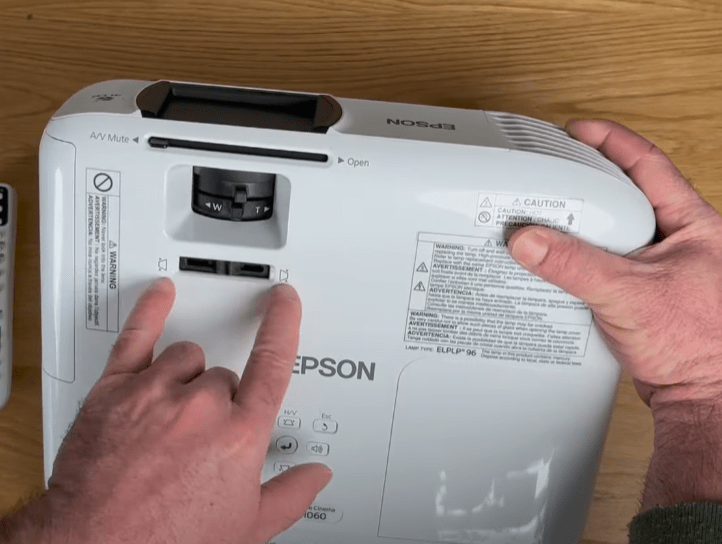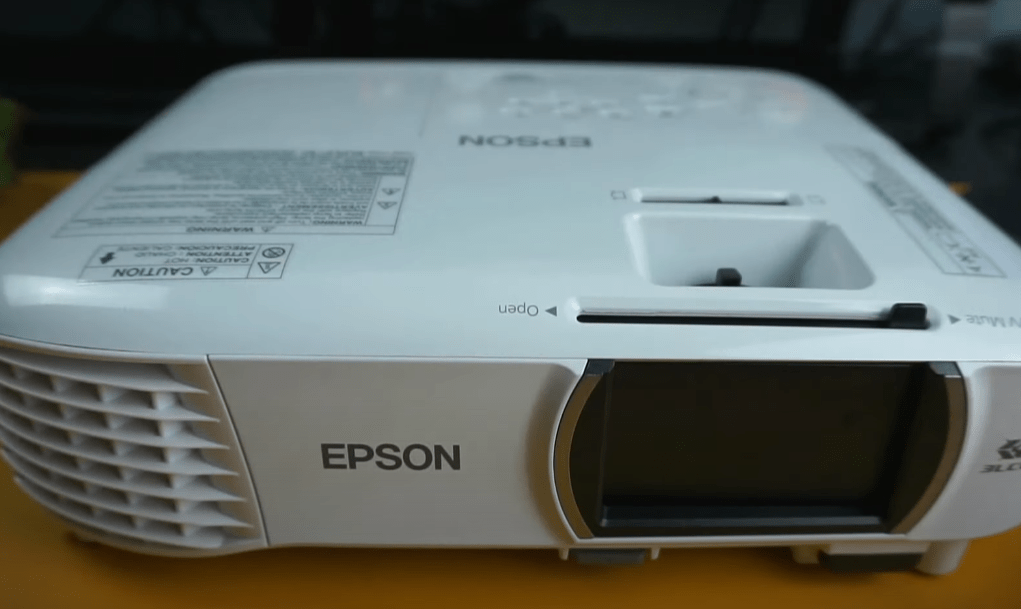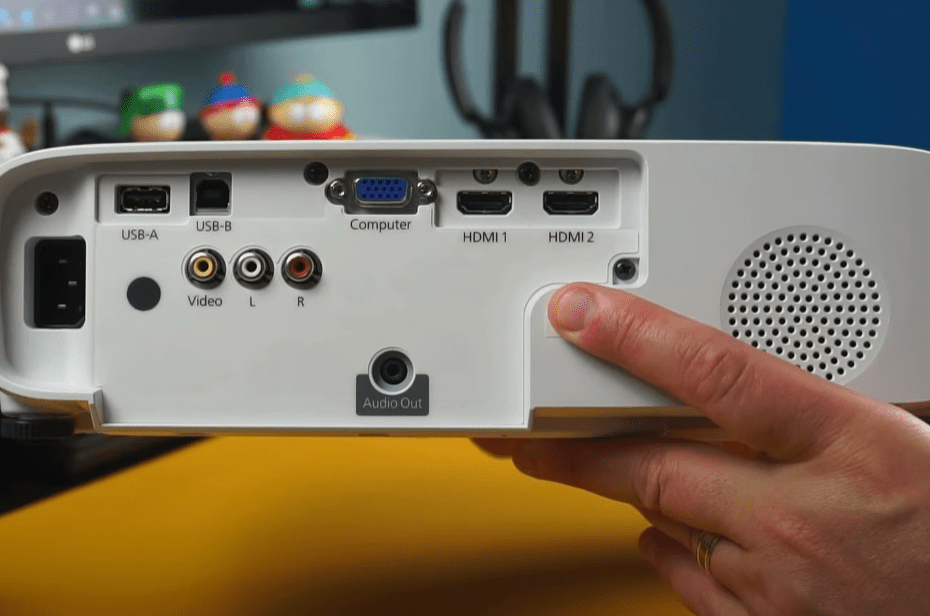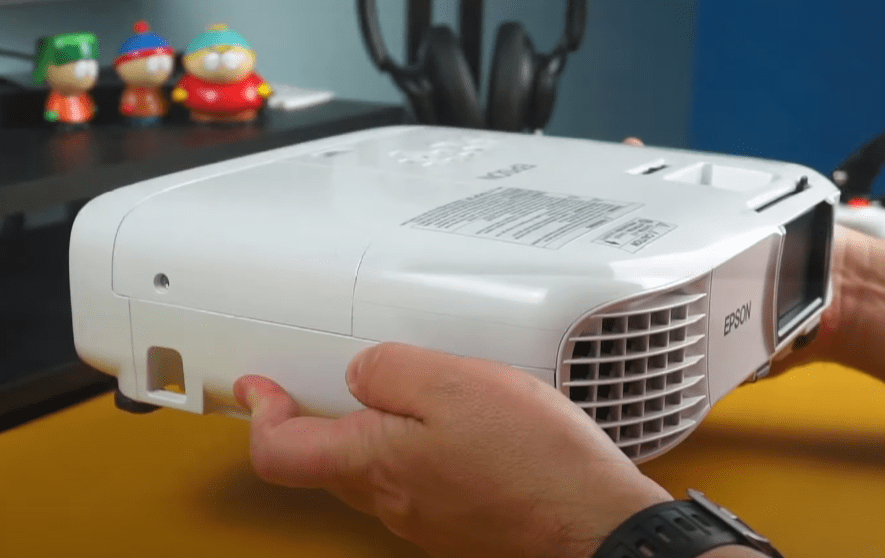At gagadget.com, your trust is our priority. We follow strict quality standards in our research, tests, and analysis of video projectors, to give you the best experience. Learn more
Epson 1060 vs Epson 1080: Comparison
Hey everyone, Jim's here. Today, I'm comparing two popular home theater projectors from Epson: the Home Cinema 1060 and the newer Home Cinema 1080. Both deliver stunning Full HD 1080p images with 3LCD technology and ample brightness for lights-on viewing. But they also have some key differences in features, performance, and price that might make one a better fit for your setup and budget.
I've spent quality time with both projectors, evaluating picture quality, ease of use, gaming performance, and overall value. In this in-depth head-to-head, I'll share my hands-on experience and side-by-side comparisons to help you decide which one is the smarter buy for your home theater.
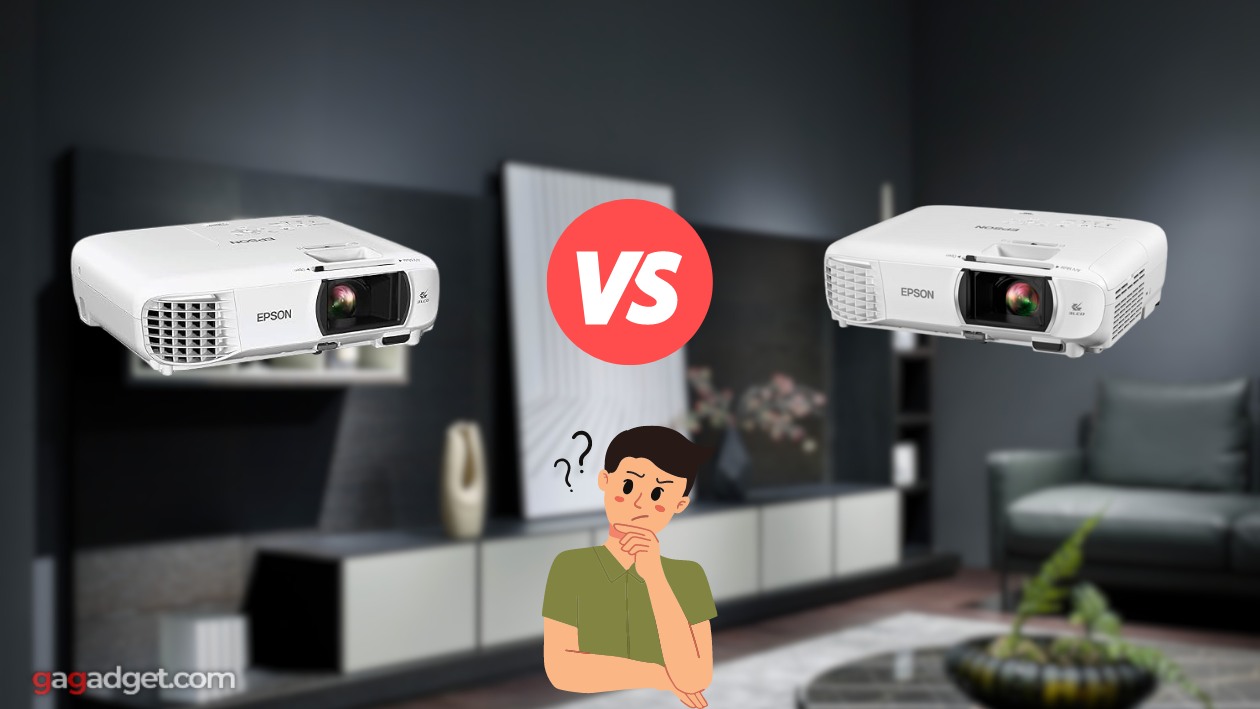
Epson 1060 vs 1080: Quick Overview
I respect your time and aim to provide only the essential information, skipping the fluff.
If you're short on time, here's the gist: The Epson 1060 and 1080 are very similar 1080p projectors overall. The main difference is brightness, with the 1080 model pumping out 3,400 lumens vs the 1060's 3,100 lumens. The 1080 also has a slightly higher 16,000:1 dynamic contrast ratio and adds a second HDMI port.
In my opinion, most users will be better off with the newer Epson 1080. The extra lumens make it more versatile for viewing in moderate ambient light and the additional HDMI is handy for connecting multiple devices. But if you're on a tighter budget and can control the light in your room, the Epson 1060 offers very similar core performance and features for a bit less money.
Table of Contents
- Epson 1060 vs 1080: Full Comparison
- Epson 1080 vs 1060: Design
- Epson 1060 or 1080: User Reviews
- Epson 1060 and 1080 Alternatives
- Which is Better, Epson 1060 or 1080?
Epson 1060 vs 1080: Full Comparison
| Specs | Epson 1060 | Epson 1080 |
| Image |

|

|
| Resolution | 1920x1080 (1080p) | 1920x1080 (1080p) |
| Brightness (Lumens) | 3,100 (ANSI) / 1,925 (Eco) | 3,400 (ISO) |
| Contrast | 15,000:1 (full on/off) | 16,000:1 dynamic |
| Display Technology | 3LCD | 3LCD |
| Color Processing | 10-bit | 10-bit |
| Lamp Life (Normal/Eco) | 6,000 / 10,000 hours | 6,000 / 12,000 hours |
| Zoom / Lens Shift | 1.2x manual zoom, no lens shift | 1.2x manual zoom, no lens shift |
| Throw Ratio | 1.02 - 1.23 | 1.02 - 1.23 |
| Image Size | 127cm - 762cm | 76cm - 763cm |
| Internal Speaker | 2W mono | 2W mono |
| Connectivity | HDMI, MHL, VGA, composite, USB | 2x HDMI, VGA, composite, USB |
| Dimensions (HWD) | 9.0" x 11.7" x 9.8" | 9.0" x 11.7" x 9.8" |
| Weight | 5.95 lbs | 6.17 lbs |
| Noise | 37dB / 28dB (Eco) | 37dB / 28dB (Eco) |
| Release Year | 2017 | 2020 |
Starting with the most important aspect - image quality - both the Epson 1060 and 1080 deliver sharp, detailed 1080p resolution using Epson's 3LCD technology. This means you get an equal number of white and color lumens for vibrant, fully saturated colors without any rainbow effect. Fine details like hair, fabric texture, and skin tones are rendered beautifully.
The Epson 1080 has a slight edge in overall brightness at 3,400 lumens vs the 1060's 3,100 lumens. In real-world viewing, this translates to a moderately brighter picture that's a bit more capable of standing up to ambient light. Think of it as an "extra gear" for daytime viewing or larger screen sizes. That said, 3,100 lumens is still very bright and most users will be quite happy with the 1060's output, especially in a light-controlled room.
Contrast is another key strength for both projectors thanks to Epson's dynamic iris system. By modulating the lamp output on a scene-by-scene or frame-by-frame basis, these projectors achieve very respectable black levels and shadow detail for the price. The 1080 again has a minor advantage with a 16,000:1 dynamic contrast ratio compared to the 1060's 15,000:1. In dark scenes, the 1080 digs just a hair deeper into those black levels while preserving highlights a touch better. But again, the difference is subtle and both look great with standard and HDR content.
Both projectors use the same 1.2x manual zoom lens and throw ratio, allowing for easy placement in most small to mid-sized rooms. I appreciate the flexible zoom range, even if the lack of lens shift means you'll need to use keystone correction or position the projector at the right height to get a square image. From 10-12 feet away, you can get a large 100-120" diagonal image - perfect for an immersive movie night or big game.
Setup and installation are refreshingly simple on both models, with intuitive menus and built-in tools like keystone correction and adjustable feet. The included remotes are backlit and provide one-button access to key picture settings. Both also feature a built-in 2W speaker, which is nothing special but handy for a quick movie night without external audio. And at 37dB in Normal lamp mode, fan noise is comparable and easy to ignore from just a few feet away.
Connectivity is solid on the 1060 with a single HDMI port, VGA, composite, and even MHL support for compatible phones and tablets. But the 1080 has the clear advantage with dual HDMI inputs, making it easier to connect multiple sources like a streaming stick, gaming console, and cable box. Both have USB ports for powering streaming dongles but the 1080 adds wireless screen mirroring via Miracast for easy casting from laptops and mobile devices.
Perhaps the most compelling argument for the 1080 is lamp life, rated at 6,000 hours in Normal mode and 12,000 hours in Eco. That's a full 20% longer than the 1060, which is still respectable at 6,000/10,000 hours. Fewer lamp swaps mean less maintenance and a lower total cost of ownership over the life of the projector.
Ultimately, the Epson 1080 edges out the 1060 in most categories but not by huge margins. It's about 10% brighter, has incrementally better contrast, and adds a second HDMI port, Miracast support, and longer lamp life. For most people, those extras are easily worth the slight price premium. But if budget is the primary concern, the 1060 remains an excellent entry-level 1080p projector with very similar image quality and core features.
Epson 1080 vs 1060: Design
Visually, you'd be hard-pressed to tell the Epson 1060 and 1080 projectors apart. Both share the exact same chassis, measuring 9.0" high, 11.7" wide, and 9.8" deep. Weight is also nearly identical at 5.95 lbs for the 1060 and 6.17 lbs for the 1080 - a barely noticeable difference.
Epson 1060 Design:
Epson 1080 Design:
The projectors feature a clean white housing with rounded corners and an offset lens. Cooling vents are on the front, with hot air exhausted out the right side (if you're facing the lens). The top panel has basic control buttons for power, source, menu navigation, and keystone correction. Adjustable feet allow for minor vertical angle adjustments.
Around back, you'll find the input panel with all your wired connections. The biggest difference is that the 1080 has two HDMI ports while the 1060 has one HDMI and a second MHL-enabled HDMI. Beyond that, both have VGA, composite video, USB Type-A, and a 3.5mm audio out jack. There's also a USB Type-B service port for firmware updates.
On the bottom, there's a threaded insert for ceiling mounting as well as a Kensington lock port for theft prevention. Epson doesn't include a cable cover or other cable management solution, but that's typical for projectors in this price range.
The included remotes are pretty standard fare - lightweight white plastic with decent ergonomics and key features like dedicated input buttons, menu navigation, and picture mode presets. Both are backlit for easy use in a dark room. The 1080's remote adds a Miracast button for wireless screen mirroring from compatible devices.
Overall, build quality is solid on both projectors with no flexing or squeaking panels. They don't feel premium but they don't feel cheap either - classic Epson construction. I appreciate the matte white finish, which is less prone to fingerprints and smudges than a glossy black. Just be careful not to lose the lens cap as there's no tether or place to store it on the projector.
Epson 1060 vs 1080 User Reviews
Reading user reviews is a great way to get a sense of a projector's real-world performance and reliability. Here's a quick summary of what Epson 1060 and 1080 owners have to say:
Epson 1060 Reviews:
Praises: "The picture quality is fantastic, especially for the price. Colors are vibrant and accurate, and the level of detail in 1080p content is stunning. I'm blown away every time I fire up a movie."
"Setup was a breeze, even for a first-time projector owner like myself. The menus are intuitive and the included quick start guide walks you through everything. Had it up and running in under 30 minutes."
***
Drawbacks: "The built-in speaker is pretty weak and tinny. It's fine for casual viewing but for a true home theater experience, you'll definitely want external speakers or a soundbar."
"Black levels are decent but not amazing. In a completely dark room, you can still see some grayish blacks in very dark scenes. But it's not too distracting and is expected for a projector in this price range."
Epson 1080 Reviews:
Praises: "This projector is incredibly bright - I have it set up in my living room with some ambient light and the picture still pops. I was worried 3,400 lumens wouldn't be enough but it's perfect."
"The dual HDMI inputs are a game-changer. I have my Roku and gaming console hooked up permanently now without having to swap cables. The Miracast screen mirroring is also really cool for sharing videos and photos from my phone."
***
Drawbacks: "The fan noise is definitely noticeable in quiet scenes, even in Eco mode. It's not obnoxious but it is there. Cranking up the volume a few notches usually drowns it out."
"I wish Epson included a carry bag or case for transport and storage. The projector feels durable enough but I'd feel better having some extra protection when I take it to a friend's house or pack it away."
Overall, owners of both projectors are very satisfied with their purchases, frequently praising the impressive image quality, ease of setup, and overall value. 1060 users love the sharp 1080p picture and vibrant colors, while 1080 owners appreciate the high brightness and extra connectivity options.
On the downside, the weak onboard audio and average black levels are common complaints for the 1060. A few 1080 users found the fan noise distracting and wished for a carrying case. But most agree these are minor quibbles considering the price and performance.
Epson 1060 and 1080 Alternatives
Not everyone will need or want the specific features of the Epson 1060 or 1080. Here are a couple of highly-rated alternatives in a similar price and performance class:
- BenQ MH535FHD: A 1080p DLP projector with 3,600 lumens, a 15,000:1 contrast ratio, dual HDMI inputs, 10W speakers, and a 1.3x zoom for easy placement:
- ViewSonic PA503W: A WXGA (1280x800) DLP projector with 3,800 lumens, a 22,000:1 dynamic contrast ratio, dual HDMI, and a short throw lens for large images in smaller rooms.
The BenQ MH535FHD is a strong contender if you prefer DLP technology over 3LCD and want a bit more installation flexibility with the 1.3x zoom lens. The slightly higher brightness and dual 10-watt speakers are also notable upgrades, though contrast is similar. It's usually priced competitively with the Epson 1080.
For smaller spaces, the ViewSonic PA503W's short throw lens and WXGA resolution might be a better fit, delivering large immersive images from just a few feet away. The high 3,800 lumen brightness and 22,000:1 dynamic contrast also make it well-suited for rooms with ambient light. Just keep in mind it's not Full HD 1080p.
Which is Better, Epson 1060 or 1080?
After testing and comparing the Epson 1060 vs Epson 1080, it's clear both are excellent entry-level 1080p projectors that deliver sharp, bright, and color-accurate images for home theater and gaming. You can't go wrong with either for big-screen thrills on a budget. But their differences in brightness, contrast, and connectivity give a slight edge to the newer model.
For most people, I recommend the Epson 1080. The extra 300 lumens make it more capable of producing a satisfying image in rooms with some ambient light - think living rooms with windows or lights on. The dynamic contrast is also a touch better for those deep inky blacks. And the dual HDMI ports and Miracast screen mirroring add welcome flexibility for connecting all your devices.
However, if your budget is tight and you have good light control in your viewing area, the Epson 1060 remains a stellar performer. It produces the same detailed 1080p picture with vibrant colors and ample brightness for dark to moderately lit spaces. And it supports MHL over HDMI for connecting compatible smartphones and tablets. You sacrifice some contrast and convenience, but you still get the core Epson 3LCD experience for a bit less cash.
Ultimately, both projectors offer tremendous value and performance for the price. The Epson 1080 is the better choice for most people thanks to its higher brightness, expanded connectivity, and overall feature set. But if you're looking to save a few bucks and don't mind the shorter lamp life and single HDMI, the Epson 1060 delivers very similar image quality and a simpler, but still capable package.
I hope my comparison has helped you decide which Epson projector is right for your needs and budget. Let me know if you have any other questions - I'm always happy to help!
Go Deeper:
